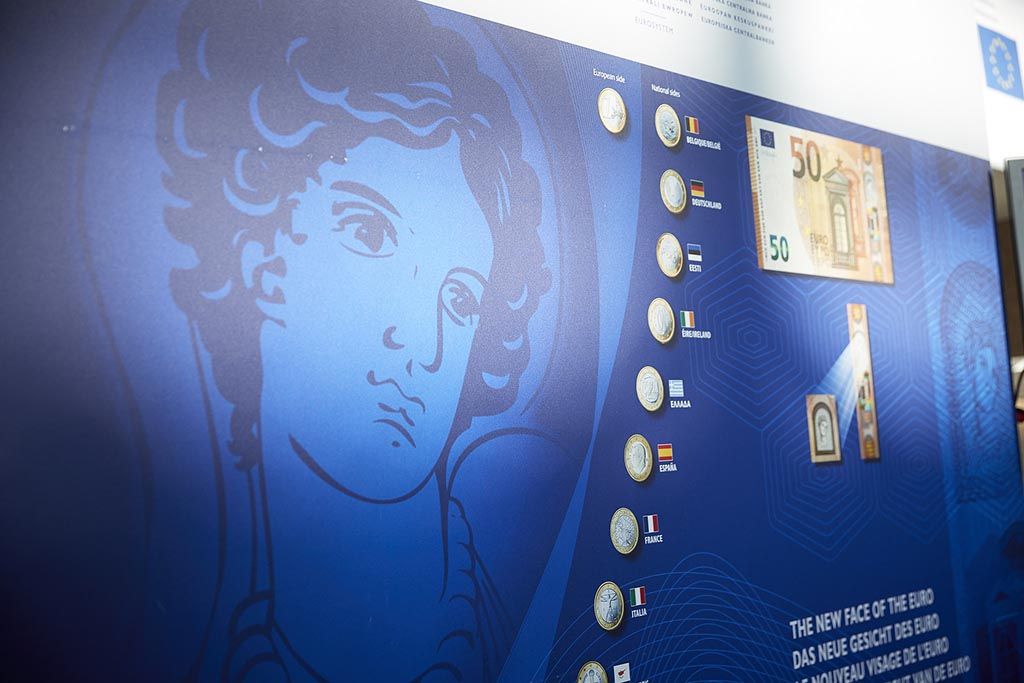Euro-to-Dollar Rate's New Floor Cemented at 1.13

Image © European Central Bank
- EUR/USD trading range has moved down a step
- New ceiling between 1.1500-1.1650
- Bounce off 2018 lows cements 1.13 floor
The Euro's trading range against the US Dollar has shifted lower, say analysts, and recent activity has "cemented" a new range floor at the level of the 1.13-1.1350 August and yearly lows.
The previous range lay between 1.15-1.1800, but weakening Eurozone data has dragged the pair lower since then and the new range lies between 1.1650 and 1.13-1.1350.
The new range ceiling is likely to cap gains, making the 1.16s the obvious place for traders to consider shorting the pair back into the range.
"The peak is probably within 1.1600-50 and the broadest the pair may trade before the end of 2018 is close to 1.1100-1.1800, but any moves outside of 1.1350-1.1650 should be short-lived," says Jeremy Boulton, an analyst at Thomson Reuters.
The failure of bears to push the exchange rate below 1.1300 and the bullish close back above the 200-day MA at 1.1315 reinforced the lows as a 'hard floor'.
Fundamentals favour a continued gradual fall, says Boulton, "but 2018 may be over before the range gives way in a meaningful fashion," he adds.
The US mid-terms present a political risk to the US Dollar, and some analysts, such as Nordea Bank's Andreas Steno Larsen see it a potentially pivotal event for the currency.
This and the U.S. government reaching its debt-ceiling again, could weigh on USD in part of Q4 and be factors keeping the 1.1300 floor intact.
Information from the options market which is widely used for the purpose of hedging currency risk, suggests hedgers see a strong chance the short-covering rally will rise to 1.1500 but not much further. This seems to suggest an even lower range ceiling on EUR/USD of only 1.1500.
"Near-term potential to 1.1500 if using option flows as a guide...However, hedgers certainly aren't rushing to cover gains above 1.15 yet," says Richard Pace, an analyst at Thomson Reuters.
"Puts" on the Euro, which are bearish bets using options, have "eased", says Pace, indicating downside could be more limited now.
The medium-term direction remains unclear, with the pair probably content to range trade.
There are huge option expiries of 4bn euros worth of contracts at 1.1400 and 6bn euros down to 1.1300, adds Pace.
Expiries often have the effect of 'pinning' the exchange rate close to the level where the expiry is happening, close to the 'fix' - the date of the expiry of the options contract.
This is the same as the original strike price, which is the level above or below which the option must be trading at expiry to make the option-holder a profit.
Yet option writers - those who sell the contracts - are prone to trying to manipulate the market back above or below the strike price to avoid making a loss on the contract (their loss is the holder's gain), and this is what creates the phenomenon of 'pinning'.
Pinning is likely to make the 1.1400 - and possibly below to 1.1300 unusually sticky, so expect the market to remain more prone to returning to that level and bobbing around it.
If the market is driven substantially higher, however, then something called 'gamma-explosion' can also occur which would accelerate the trend higher.
This is what happens when option writers give up their battle to manipulate the exchange rate back (down in this case) to the expiry level and instead join the trend.
Advertisement
Bank-beating EUR/USD exchange rates: Get up to 5% more foreign exchange by using a specialist provider to get closer to the real market rate and avoid the spreads charged by your bank when providing currency. Learn more here





